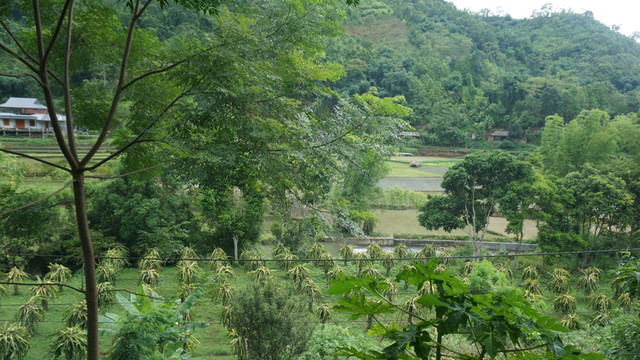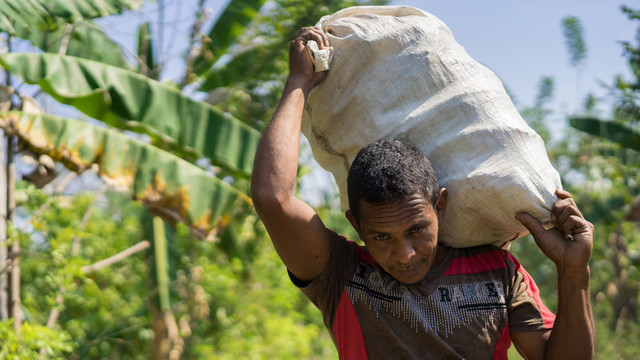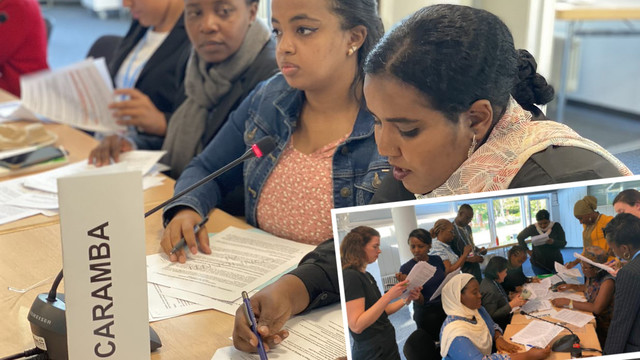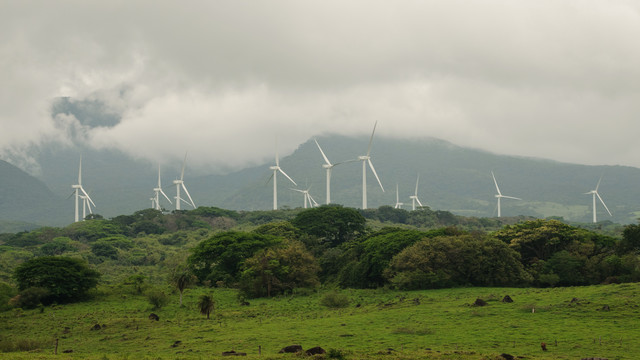The Paris Agreement, SDGs and simple local monitoring
How can we minimise monitoring costs and make sure that money intended for local "development" ends up with the people who need it?


A local farmer uses manual callipers to measure a tree. Measuring trees in person can be cheaper and just as accurate (Photo: Copyright Geoff Wells)
The Paris Agreement and the Sustainable Development Goals (SDGs) set the stage for the next generation of public and private investments in local environment and development initiatives. Getting the money down to the local level often involves intermediaries, adding to costs.
Emerging research on smallholder agroforestry projects shows that we can minimise 'intermediary' costs, and in doing so maximise 'front line' finance and participation.
Environment and development initiatives often face criticism that a large share of the funding intended for local 'front line' environment and development initiatives in developing countries ends up with the "technical intermediaries". These intermediaries are effectively hyped-up project managers (I can say that because I am one). Their function is to support the technical monitoring, accounting and reporting which funders or investors judge too complex to be carried out locally.
Not only does this introduce significant middle-man costs and reduce finances locally, it can also restrain local participation and decision making by distancing useful information and decision making from local stakeholders.
I was in Paris last month on the sidelines of COP21 at IIED's REDD+ workshop, the Global Landscape Forum and the Development & Climate Days, where I had many fruitful discussions on monitoring objectives under the Paris Agreement and SDGs.
Both texts seek to provide a focus for the next generation of public and private funding flows for environment and development initiatives, and both rightly put a big emphasis on transparency and accountability. But I found myself asking: do we really need such a big role for the intermediaries in monitoring and accountability processes?
Simple monitoring can be cheap and accurate
Simple local approaches to monitoring can be just as accurate as complex and costly 'technical' approaches – that's the headline finding from a project I work on at the University of Edinburgh (UoE), funded by Ecosystem Services for Poverty Alleviation (ESPA).
Under this project, UoE, IIED and the Plan Vivo Foundation have been collaborating with agroforestry projects in Uganda (Trees for Global Benefits) and Mexico (Scolel Té) to test and optimise different approaches to monitoring in smallholder payments for ecosystem services (PES) initiatives.
We found that when it comes to monitoring greenhouse gas sources/sinks in smallholder agroforestry, simpler field analyses by local people (e.g. analysing tree trunk sizes) can be just as – and sometimes more – accurate and cheaper than other more technical approaches (e.g. using satellite images). We also found that:
- Monitoring approaches that involved face-to-face interaction (like visiting a field and measuring trees) are preferred by local participants, and
- Local people are more likely to be empowered in such approaches through better information provision, and through more flexible communication and decision making with project administrators.
Complex monitoring: a common dilemma
Obviously ensuring transparency and accountability is not as simple as just visiting a farm, measuring a few things and saying hello to the farmer. For example, while our study focused on calculating the size of trees, measuring things is only part of a broader effort to ensure accountability – creating a paper trail of decisions and of financial transactions is just as important.
Also, the best approach to monitoring will depend on what is happening on the ground. For example, while our study focused on approaches to monitoring on small farms, larger-scale forest conservation projects will probably not have the funds to physically measure enough trees, so may use satellites instead.
But our findings do speak to a common issue when designing and monitoring environment and development projects: how can we have simple, cost effective and robust monitoring that diminishes the need for intermediaries and gives control (and a greater share of finances) to local people?
From monitoring trees, to forests and people
For example, emerging larger-scale approaches to saving forests (e.g. Reducing Emissions from Deforestation and Forest Degradation (REDD+) projects) increasingly require monitoring of not just trees, but also impacts on local people and the local economy.
This added complexity could make monitoring even more costly and opaque unless simple and locally inclusive approaches to monitoring are advocated.
This issue is increasingly being raised in practice under REDD+. At IIED's REDD+ workshop in Paris, Mirey Atallah, the national programme officer at the UN-REDD Programme Secretariat, called for monitoring that is fit for purpose – recognising complexity, but only as much as is necessary. Dr Amy Duchelle from the Center for International Forestry Research (CIFOR) also talked about the need for cost effective monitoring as REDD+ is upscaled.
From monitoring forests and people, to landscapes
In the case of environment and development initiatives more generally, the IPCC's 5th Assessment Report, the Paris Agreement and the text of the SDGs all emphasise that effective approaches to monitoring are key to achieving climate change adaption, mitigation and sustainable development objectives.
Additionally, there is a renewed push for more holistic 'landscape' approaches to sustainable development, where a great diversity of human and environmental factors are considered in project design and (potentially) monitored.
Once again, unless we're careful this demand for complexity and monitoring could increase the costs of monitoring and diminish benefits locally.
Can you streamline your monitoring?
Our study results show that simple, cost-effective monitoring that increases local participation and finances is possible in smallholder agroforestry. In light of the increased demand for monitoring complex activities, we need to ask ourselves if this can also apply to other types of monitoring.
What is the aim of your monitoring? What level of accuracy is necessary given the costs of different monitoring approaches? Are local people empowered or inhibited by monitoring? Is there a way for us intermediaries to minimise our role?
Geoff Wells (geoff.wells@ed.ac.uk) is a PhD student at University of Edinburgh and a consultant working with IIED's Sustainable Markets Group.



